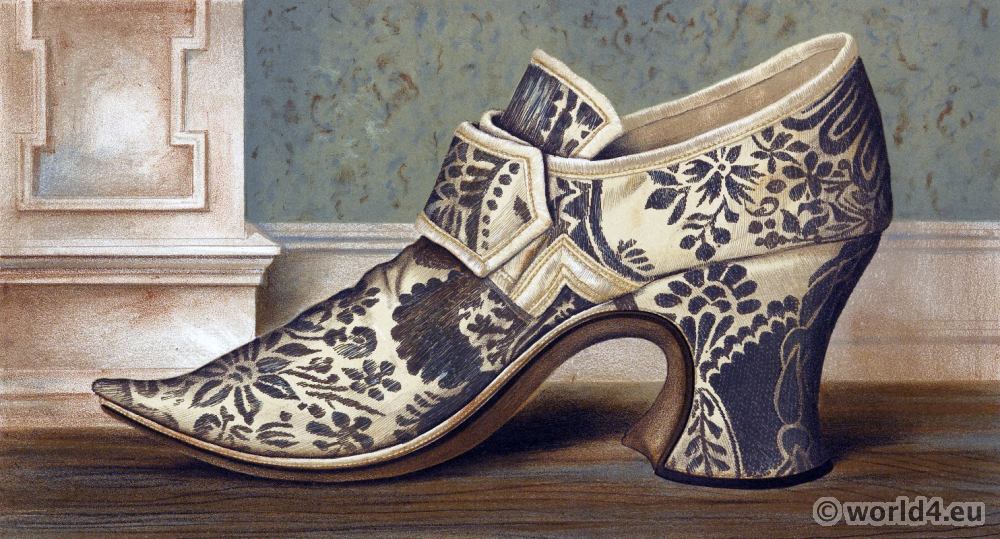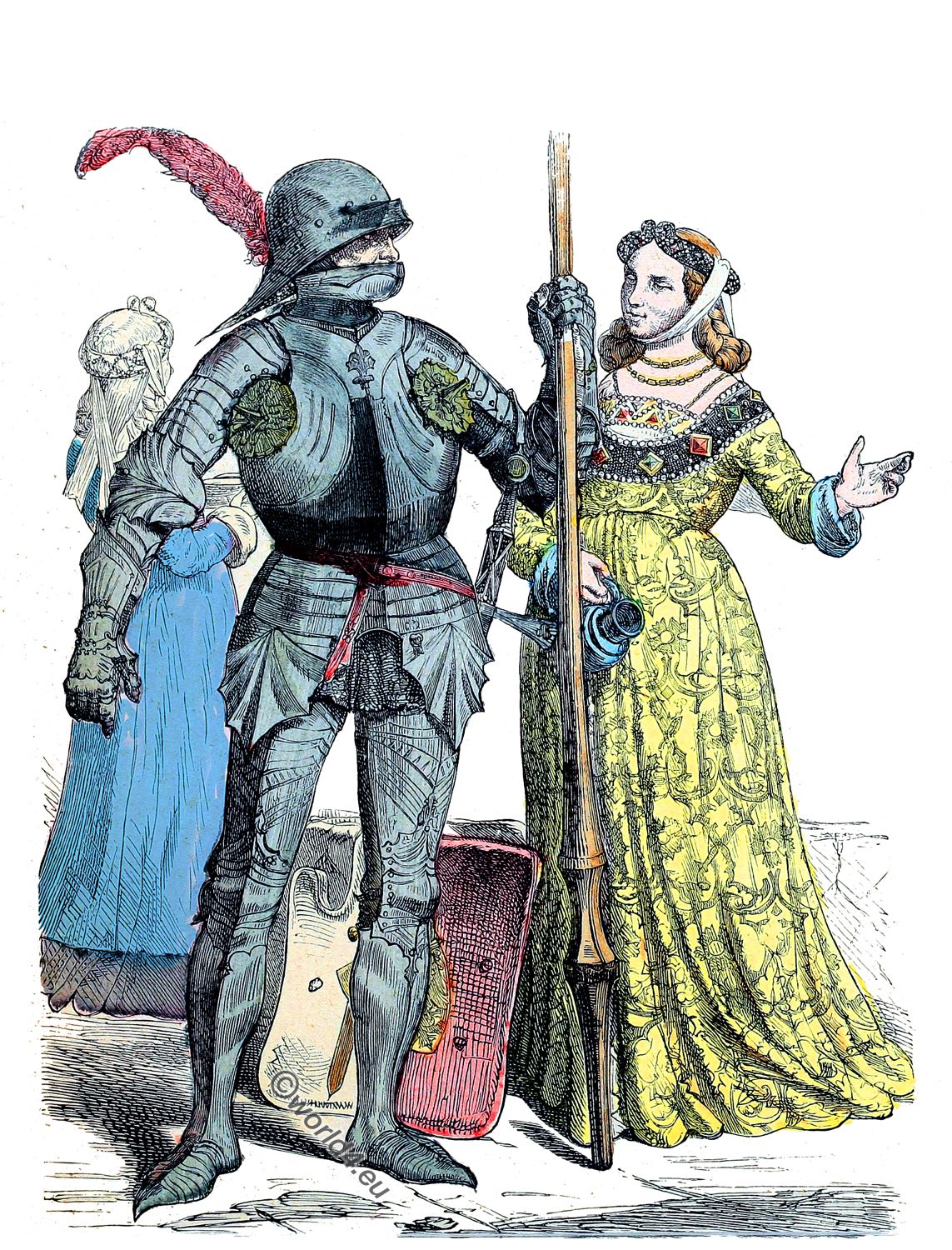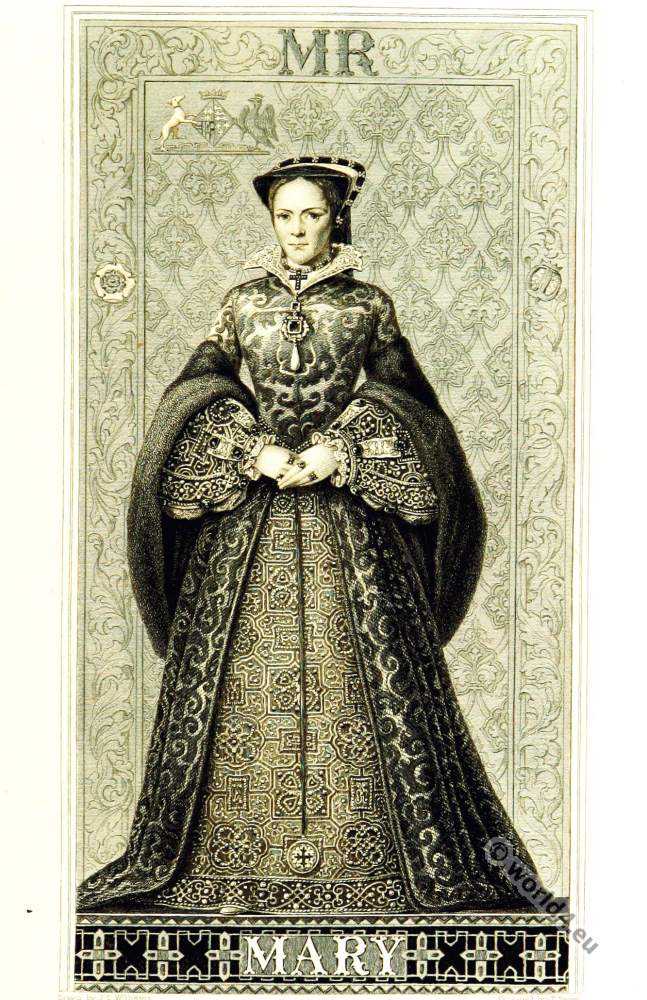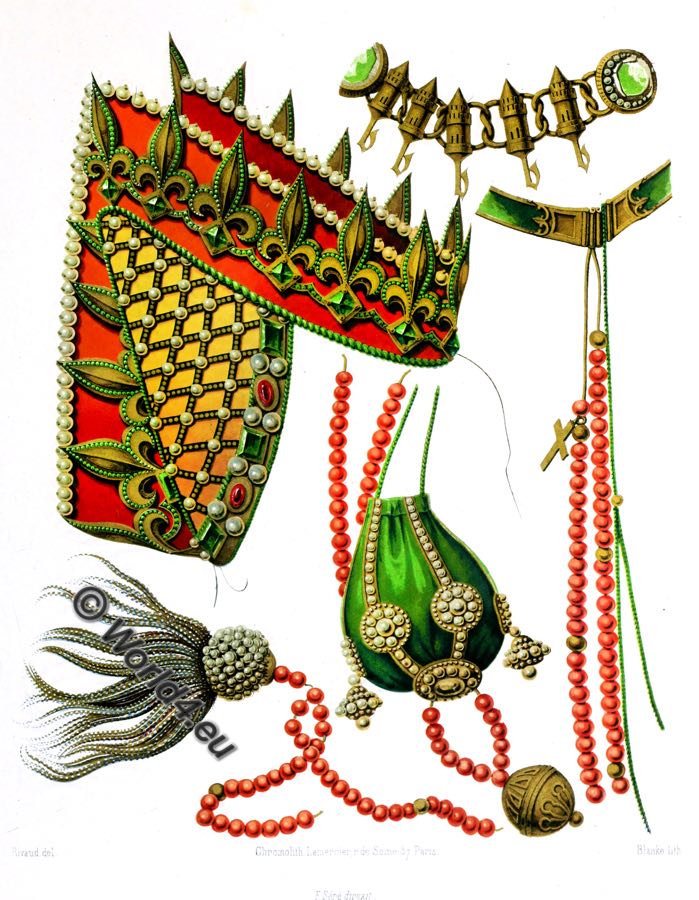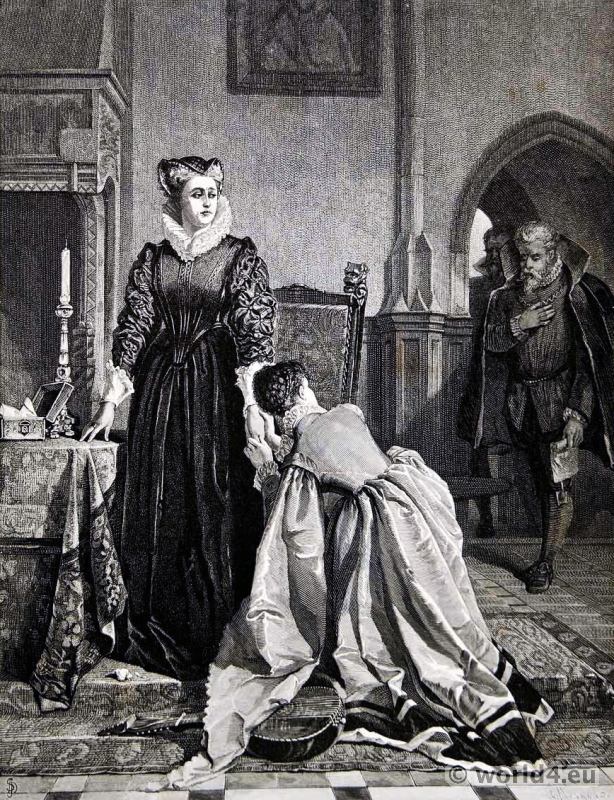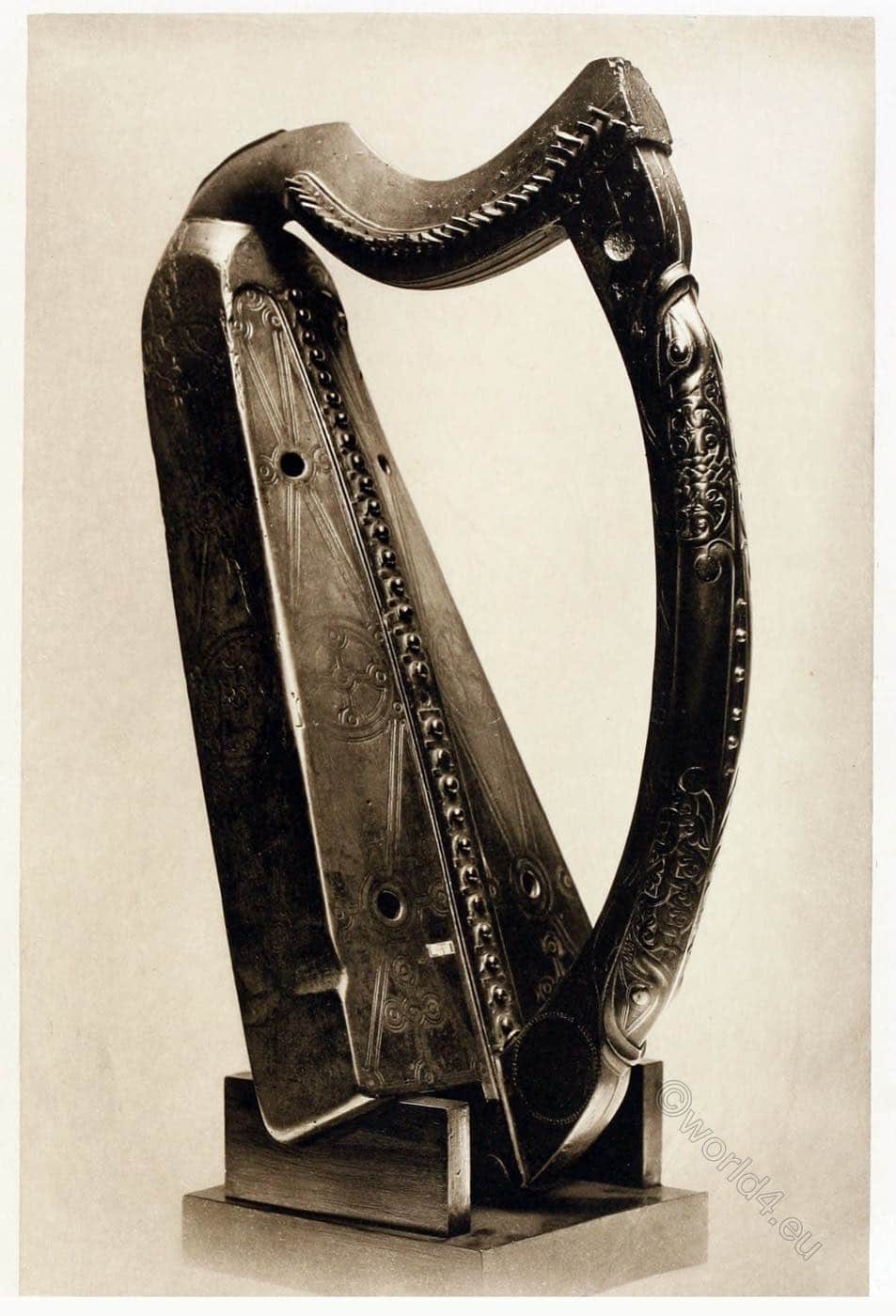
QUEEN MARY’S HARP.
(Scottish Gaelic: Clàrsach na Banrìgh Màiri)
THIS venerable instrument, the least impaired Gaelic Harp existing, is known as Queen Mary’s Harp, and belongs to C. Durrant Steuart, Esq., of Dalguise, near Dunkeld. Of Gaelic Harps we can only reckon seven that may be dated earlier than the eighteenth century, the oldest being the Queen Mary and Lamont Harps, now in Edinburgh, and the harp named after Brian Boru (Borornha), preserved at Trinity College, Dublin; these three dating anterior, perhaps long anterior, to the fifteenth century.
The Queen Mary and Brian Boru Harps are the two most nearly resembling one another. They are small, the Queen Mary Harp being only 31 inches high and 18 inches from back to front. They were played resting upon the left knee and against the left shoulder of the performer, whose left hand touched the upper strings. The comb is from 2½ to 3¼ inches high. It is inserted obliquely in the sound chest, and projects about 14 inches. The sound chest, in shape a truncated triangle hollowed out of the solid, is 5 inches wide at the top and 12 at the bottom, the depth being 4t inches. The bow or forearm measures in a straight line 27½ inches, the chord of the arc of the inner curve being 23 inches.
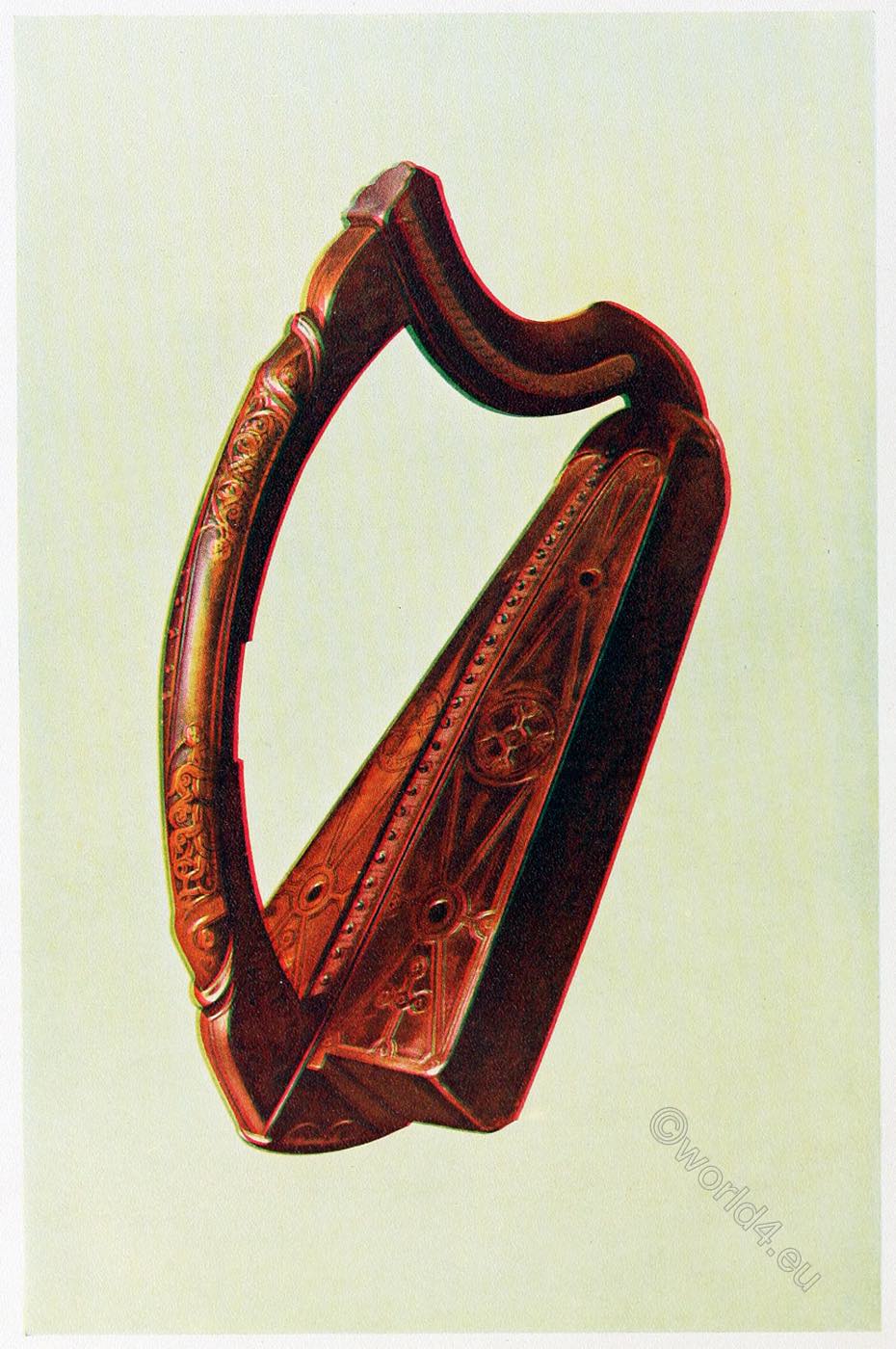
The front of it is expanded so as to form a convenient hold for the hand; it tapers slightly above and below, and ends both ways in boldly carved heads of animals of a symbolical character. The strings were of brass and twenty-nine in number, and were made to sound by the player’s finger-nails, which were allowed to grow long for the purpose.
The Queen Mary Harp has had another (the lowest) string attached later. This string measured 24 inches, the highest treble string 2½ inches; what compass the harp had it is now impossible to decide, but, following the tradition of Irish harpers, the accordance was based upon the old diatonic scale with the minor seventh, sometimes replaced by the major seventh. We learn by the lectures of the late Dr. Eugene O’Curry that the ancient Irish had three modes in their music, the “Crying,” the “Laughing,” and the “Sleeping.” Whatever these tunings were, and probably the Highland Scotch had the same, their secret is locked up in the wood of the harps that once responded to them. In this, and frequent instances in these Plates, the instruments are not represented as strung. It is impossible to keep old instruments with that strain continually upon them, and to string them only to have them drawn would have been attended with many disadvantages.
The Queen Mary Harp has a history based upon the family tradition of its former owners, the Robertsons of Lude in Perthshire, but in passing through several mediums it has become unreliable. It was long believed to have been Mary Stuart’s, and, according to the Lude tradition, it had golden and jewelled ornaments attached to the right upper circle of the bow including her portrait and the Royal Arms of Scotland, which were stolen about 1745.
The historical inquiry containing the information respecting this Harp is by John Gunn, F.S.A.E., and was published in 1807, under the auspices of the Highland Society. A paper read before the Society of Antiquaries of Scotland by Mr. Charles D. Bell, F.S.A. Scot., and published in their Proceedings for 1880-81, from which I have made extracts, thoroughly sifts the facts that can be deduced from it, and which may be thus accepted:- Queen Mary of Lorraine, the mother of Mary Queen of Scots, gave this harp to Beatrix Gardyn of Banchory, Aberdeenshire. Beatrix Gardyn was married to Finla Mor, and from this marriage the family of Farquharson of Invercauld, in Braemar, is descended.
Finla Mor was killed at the battle of Pinkie in A.D. 1547. John Robertson, the eleventh in succession to Lude, married Margaret Farquharson, the only daughter of the then Laird of Invercauld. He was fifty-six years in possession of Lude, and died in A.D. 1730. The last performer on this ancient harp was his great-grandson, General Robertson, who lent both the Lude harps for examination by the Highland Society in 1805. It appears to have been General Robertson’s belief that this harp was acquired for Lude by the marriage of John, the eleventh Laird, with a direct descendant of Beatrix Gardyn, but, following Burke’s genealogy of the family, it would appear that it came to Lude with Beatrix Gardyn herself, on her marriage with John, seventh Laird. The Robertsons of Lude are now, in the direct line, extinct, but the family of Gardyn is represented by Francis Garden-Campbell, Esq., of Troup and Glenlyon.
Queen Mary’s and the Lamont Harps are on loan (1887) in the Museum of the Scottish Society of Antiquaries, Edinburgh, and it may be mentioned that when exhibited in the Music Loan Collection, South Kensington, the former was insured for £1500 and the latter for £1000.
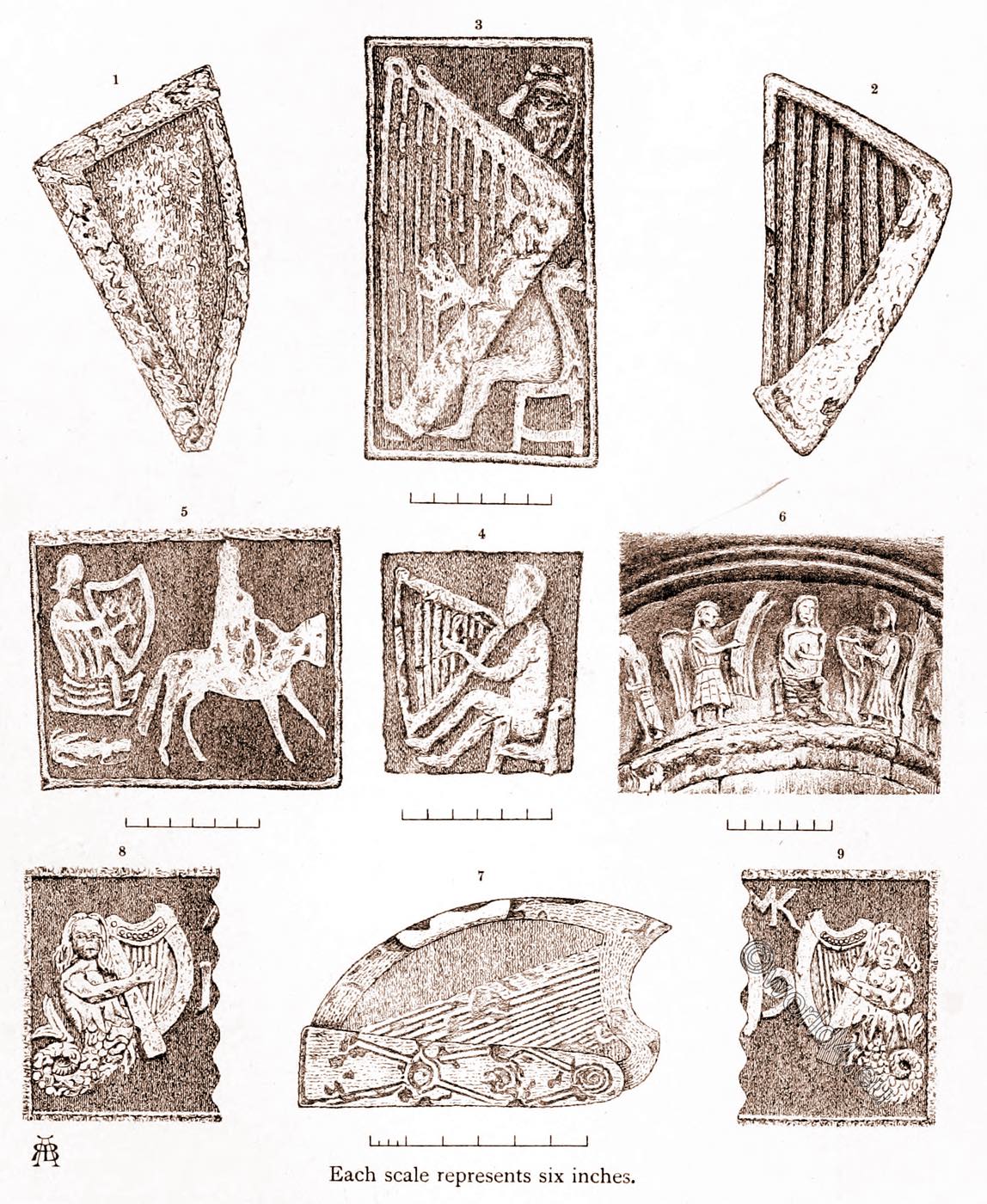
The Highland Harp as represented upon stone.
No. 1. Aldbar, c. 8th or 9th century. No. 2. Nigg, c. 9th or 10th century. No. 3. Dupplin. c. 10th or 11th century.
No. 4. Monifieth, c. 10th or 11th century. No. 5. St. Oran’s Chapel, Iona, c 13th century.
No. 6. Cathedral, Iona, c. 13th century. No. 7. Keills, c. 14th century. Nos. 8 and 9. Kilcoy, 1679.
Source: Musical instruments, historic, rare and unique; by Alfred James Hipkins and William ill Gibb. London: A. and C. Black, ltd. 1921.
Related
Discover more from World4 Costume Culture History
Subscribe to get the latest posts sent to your email.

